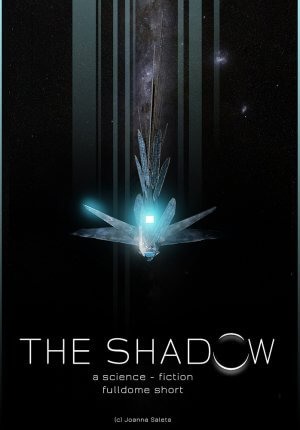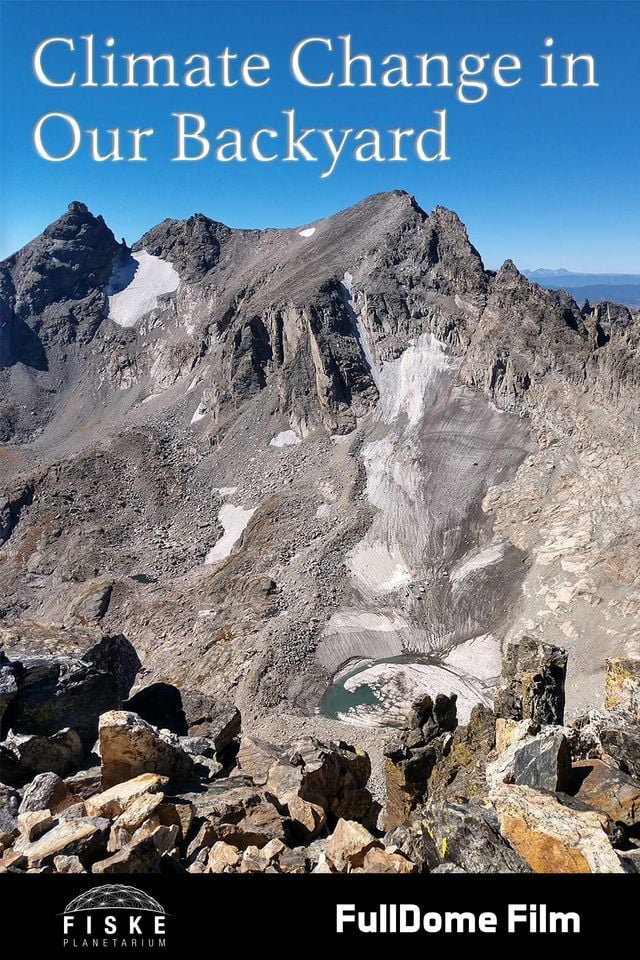The Shows
NanoPlanet, A dome expedition to the Cell (Y)
NanoPlanet: A Dome Expedition to the Cell takes you on a breathtaking journey into the microscopic world of the human cell, revealing its intricate structures and dynamic processes in stunning detail. As you shrink down to the size of a molecule, you’ll glide through the cytoplasm, witness DNA unraveling, and see proteins at work—all brought to life through cutting-edge animation and immersive storytelling. This unique planetarium show transforms the hidden complexities of cellular biology into a grand cosmic adventure, making the invisible visible and showing how the tiniest parts of life mirror the vastness of the universe.
The Reefs of Belize (Y)
Take a fulldome underwater journey to Glover’s Reef Research Station in Belize and immerse yourself in coral reefs. Experience the thrills, challenges, and serendipity of wildlife photography and explore the role of visual culture as a catalyst for positive social change on our tiny blue planet.
Sinkholes of Yucatan - Portals to Another World (Y)
A short 360° film describing fascinating portals into the past. Remember the meteorite that drove the dinosaurs and 80% of all living things to extinction 65 million years ago? It fell in what is today's Yucatán Peninsula in Mexico. The meteorite impact had numerous immediate and far-reaching consequences, including the Sinkholes of Yucatan. Preview the entire film below.
SONOLUMIN (Y)
SONOLUMIN is a stop-frame animated 360° fulldome film exploring relationships of light, sound, and space.
Stardancer's Waltz (Y)
A 360° animated film inspired by and utilising a musical track from Concerto for Violin, Rock Band and String Orchestra by Mike Mills (founding member of the iconic band R.E.M.) and Grammy-nominated violinist Robert McDuffie. The artist Diana Reichenbach is an award-winning multimedia artist specializing in immersive and architectural media, whose work has been screened in festivals and venues across five continents.
Sunset Meditation (Y)
Enjoy a free guided meditation experience from Ball State University with the program “Sunset Meditation.” View an amazing sunset as you travel from the Grand Canyon to the North Pole. Then relax under a night sky filled with stars and glimpses of the Northern Lights.
The Shadow (Y)
A space station is destroyed by an unknown entity. A lone survivor is trying to reach an asylum on a mysterious planet.
Tree of Life – Music Show (Y)
A fulldome (360°) experience of rock music and immersive visuals based on the work of Human Spiral (Mexican experimental rock music project) and inspired by Mexican culture. A unique artistic blend of music, animation, and new media.
The Unknown Between (Y)
During the 2015 Spring semester at the Massachusetts College of Art and Design, students explored the topic of hypnagogia. In less than 5 months these students collaborated on all aspects of storytelling, concept development, surround sound design, and 4k fulldome production to create an immersive experience which explores the moment between wakefulness and sleep.
Waiting Far Away (Y)
An explorer of the cosmos has traveled too far… And can’t find home. Follow in the footsteps of a cosmic traveler as he shares a wild story. Find out what grand mysteries he has uncovered while journeying deep into intergalactic space, searching… In the creative process of producing planetarium shows, we often come across imagery that is stunning but doesn’t work in the context of a science show. And so our collection of fulldome astronomy art animations has matured into a hybrid form of storytelling where we mix imagination with real data.
Oceans In Space (RA)
The search for life in the universe begins deep in Earth’s oceans — and extends out to the stars! OCEANS IN SPACE answers the deep questions humans have about where life began and where it might exist elsewhere in the cosmos. It’s a thought-provoking exploration of our own planet and the worlds around other stars in the search for life.
Kaluokahina - The Enchanted Reef (N)
The vastness of our planet’s oceans guards unimaginable secrets. One of its most precious is Kaluokahina, the enchanted reef whose magic protects it against humans finding it. Kaluokahina’s colorful inhabitants have thus always lived in peace… until the volcano erupts, and the spell is broken. Now it’s up to the young sawfish Jake and his paranoid pal Shorty to restore the magic of Kaluokahina. Their only lead: the ancient legend that tells of touching the moon… But how is a fish supposed to touch the moon? This is just one of the intriguing puzzles that Jake and Shorty have to solve on their most exciting adventure ever: the quest to save their beloved reef.
AIDA : Asteroid Impact & Deflection Assessment Mission (Y)
NASA and the European Space Agency (ESA) initially planned separate asteroid deflection missions but decided to collaborate in 2015 on a joint mission, AIDA (Asteroid Impact and Deflection Assessment). The mission targeted the binary asteroid 65803 Didymos and its moonlet Dimorphos. AIDA involved two spacecraft: the European AIM (Asteroid Impact Mission) to study Didymos and Dimorphos, and the American DART (Double Asteroid Redirection Test), designed to impact Dimorphos. Though AIM was canceled, it was replaced by HERA, set to observe the asteroid four years after DART’s impact. DART successfully hit Dimorphos on 26 September 2022, and HERA is expected to arrive in December 2026.
GRACE Gravity Recovery and Climate Experiment (Y)
Many countries rely on underground aquifers for a steady supply of fresh water. But how can we predict when these reserves will run out? In the USA, half of the fresh water comes from 16 million wells, with California pumping 42 billion liters daily.Wet ground is heavier than dry ground, creating a stronger gravitational pull. Discover how NASA's GRACE (Gravity Recovery and Climate Experiment) measures these gravitational differences to monitor underground water levels.
Climate Change in our Backyard (Y)
As we gain a broader understanding of Earth, we see it as a complex, interconnected world that humans have directly impacted. Explore carbon dioxide's role in the atmosphere, Earth's natural temperature shifts (Milankovitch Cycles), and how we are influencing the planet today. Learn how scientists study climate change and the global efforts to protect our future. From a remote shack in the Colorado Rockies to ancient Antarctic ice bubbles and our own homes, Climate Change in Our Backyard reveals how and why our climate is changing. Enjoy the 360° preview below.
A Place Like No Other (Y)
Alaska is a place like no other. For many people a trip to Alaska is a life-long dream. For the people who live here, they depend on and protect an enduring way of life. But there are places in our state so remote, so wild, that few Alaskans have ever gone. Here in the planetarium we’re going to take you to these places, to remote wilderness to see iconic animals and landscapes that define the Last Frontier, places that make Alaska… Alaska.
Big Astronomy (Y)
Step out onto an ice floe in the middle of the Arctic Ocean, and watch and listen as scientists race the fading light to set up one of the most ambitious international climate collaborations ever, MOSAiC. The Multidisciplinary Drifting Observatory for the Study of Arctic Climate launched in September 2019. Led by the German Alfred Wegener Institute, the mission froze an icebreaker into the Central Arctic Ocean, to better understand the remote region and the role it plays in global climate and weather patterns.
Drifting North: Into the Polar Night (Y)
Step out onto an ice floe in the middle of the Arctic Ocean, and watch and listen as scientists race the fading light to set up one of the most ambitious international climate collaborations ever, MOSAiC. The Multidisciplinary Drifting Observatory for the Study of Arctic Climate launched in September 2019. Led by the German Alfred Wegener Institute, the mission froze an icebreaker into the Central Arctic Ocean, to better understand the remote region and the role it plays in global climate and weather patterns.
Light Echoes (Y)
In just five minutes, Ligth Echoes presents 12 awe-inspiring cosmic events—nine planetary nebulae, two unstable supergiants, and one supernova remnant—accompanied by hypnotic music that echoes the vastness of the universe.
Rising Star (Y)
“Rising Star” takes you on an astronomical journey from our beginnings through the development of astronomy research in South Africa and looks at what the future of astronomy holds for the country.
In addition to introducing multi-wavelength and multi-messenger astronomy, it highlights the many remarkable facilities hosted in South Africa along with some of their latest results. This includes unrestricted views of the 10-metre class Southern African Large Telescope and the most powerful radio telescope in the Southern Hemisphere, MeerKAT.The film is accessible to all ages and aims to excite audiences from around the world about South African astronomy while inspiring the next generation of astronomers.


















